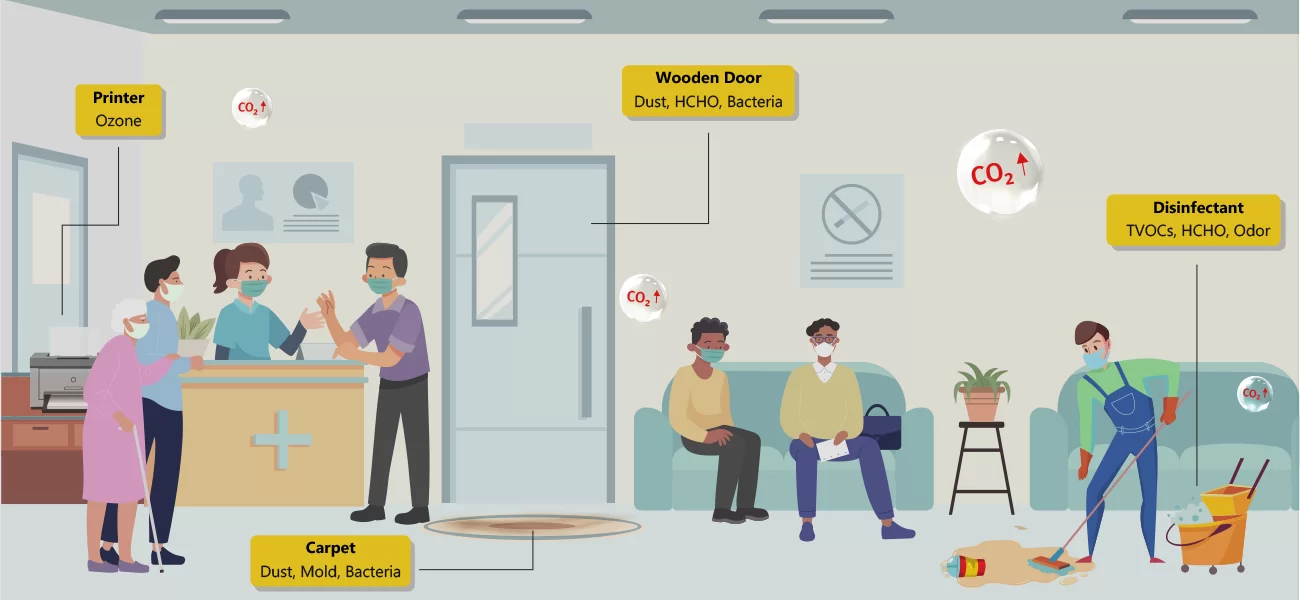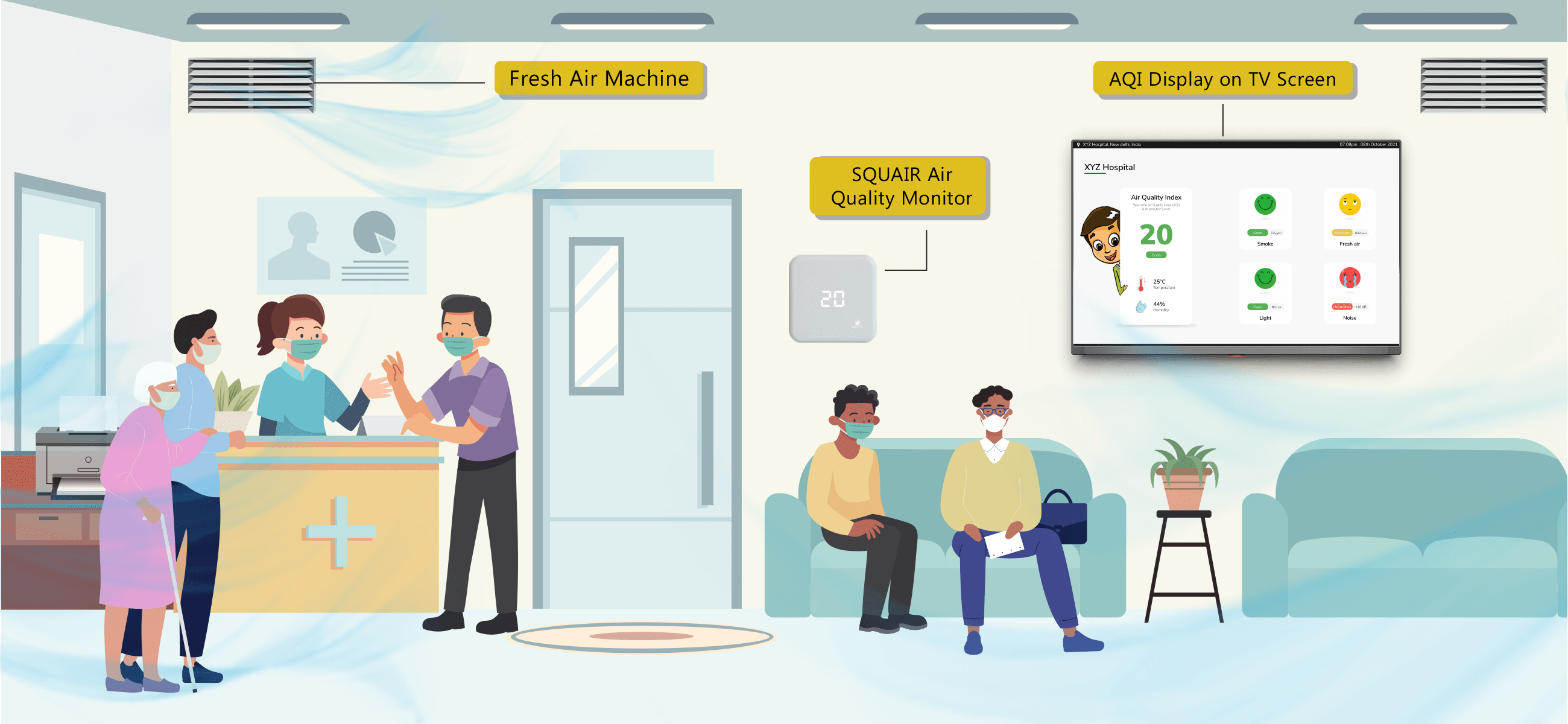Air Quality Solutions For Healthcare
The healthcare industry also referred to as the medical industry offers various services such as medical services, manufacturing of medical equipment, drug discovery and development, medical insurance, educational institutions, clinical trials, hospitalizations outsourcing, telemedicine, and medical tourism. The industry plays a role in disease diagnosis, its treatment and management. The industry also offers therapeutic, remedial and preventive services to the patients. Healthcare industry is the largest sector in India in revenue generation and employment terms. In the 2021 budget, expenditure on healthcare by the public stood at 1.2% of GDP. India is expected to increase to the US $ 133.44 billion by the year 2022. In the financial year 2021, 13.7% growth in health segments was recorded. Among total gross earned, the health segment shares 29.5% share in the country. In 2022, the healthcare industry is expected to grow $372 Billion at 39% of the Compound Annual Growth Rate (CAGR). The Diagnostic market in India shares $4 billion.
The Indian healthcare sector is divided into two components private & public. The public system is a government based comprising secondary and tertiary care institutions focusing on offering basic facilities of healthcare in key cities. However, the private system is common in metros and tier 2 & 3 cities.



